Thu, 12 Mar 2015 . Last updated Mon, 01 Jun 2015 14:22


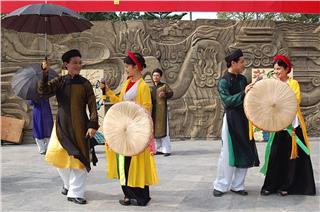
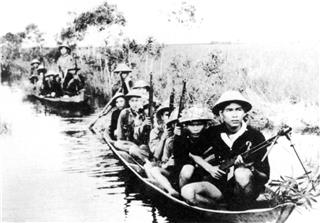
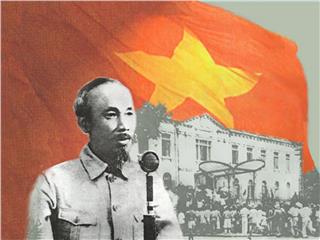
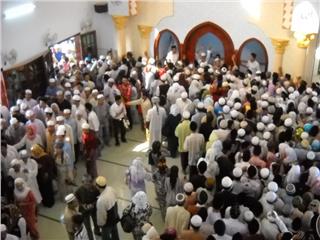

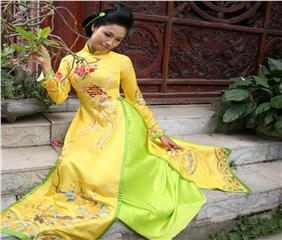

The centralized country under the Le dynasty was powerful in economy, politics, culture and education. This was the heyday of feudalism in Vietnam. Under the Le dynasty, money was considered the most important factor of social life. Together with the higher increasing demand for money, the number of coins cast also increased. They had similar sizes and different carved patterns due to different casting skills and levels of creativity.
The imperial city was built in the center of the country to become the foundation for feudalism during its first days. The development of the citadel stimulated the development of the existing city. Doan Khanh Thong Bao coin had a weird shape. The coins, which are 2.5-3mm long and have proportioned layout, were cast under King Le Uy Muc’s reign. They are proof of the development in quantity and quality of the coins. Thang Long was the capital city of Dai Viet under the Ly, Tran, Le, Mac and Le Trung Hung (1010 - 1788). It was also known with the name “Ke Cho”.
In 1428, Le Loi changed the name of Thang Long to Dong Kinh. In the 16th century, Dong King became a busy urban area which attracted many foreigners. Therefore, people started calling it “Ke Cho”. In the 17th century, the commodity economy was quite developed. Thang Long imperial citadel could leave impressions on people which the introduction of handicrafts such as silk weaving, pottery and copper casting. A large market of national level was then established, leading to increase in demand for money. When excavating Thang Long imperial citadel, experts were surprised at the cultural layers and traces of a complex of architectural and art buildings.
The objects found at the relic site showed a prosperous economic and cultural period, and the development of traditional craft villages around the imperial citadel. The huge quantity of coins cast mainly under King Le Thanh Tong’s reign proves the prosperity of the dynasty. In the 17th and 18th century, Pho Hien was an outstanding urban area ranking behind Thang Long – Ke Cho. Pho Hien is located beside the left bank of the Red river. Pho Hien is about 55km from Hanoi if we travel by waterway. The area’s position has an important role to the waterway routes in the Red river delta. The Xich Dang River is the trading route for Pho Hien. This is a traditional place where the rivers from the East Sea to Thang Long imperial citadel gather.
Pho Hien port was where foreign boats stayed to process procedures and ask for license to enter the capital city. Boats and ferries from Thang Long - Ke Cho and areas at home and overseas came here to do business and exchange goods. At that time, the demand for currency circulation here was very high. In the 17th century, the area became a big urban area imbued with the features of the national economy. Due to political influences, trading activities were limited. The country faced economic recession for nearly 2 decades. The clearest sign of the recession was the reduction of trading transactions with foreigners.
A researcher of ancient coins of Vietnam has listed up to 80 kinds of Canh Hung currency, including “Canh Hung Thong Bao”, “Canh Hung Chi Bao”, “Canh Hung Vinh Bao”. There were so many kinds of money because in Canh Hung era (Le Hien Tong’s reign), not only the central government but local governments also took part in coin casting, even illegal casting. According to researchers, the casting of so many coins was because of the difficult economic condition. The government could not collect much tax while it needed much money for expenses, so it misused its power to cast coins. High demand for cash, the development of commodity economy, which enabled people to do business, pay tax, purchase jobs, give presents more easily, and local authorities’ right to cast coins to be cast in large quantity.
In the 21th year under Canh Hung’s region (1760), the court could not give the market enough money. The court had to admit and legalize coin casting workshops in localities. Therefore, Canh Hung currency was confused. This is considered capturing. During 1527 – 1592, Dai Viet was divided into two parts: The Southern region controlled by the Mac dynasty and the Northern Central region controlled by the Le Trung Hung dynasty. According to documents, the Mac dynasty allowed casting of copper coins in 1592. However, most of the coins were damaged so people started casting iron mixed with zinc to use in the country.
However, archaeologists still found many copper coins cast in Minh Duc era (1527 - 1529). They are of high quality, standard weight, and their calligraphy is as beautiful as that of the coins cast in the Pre-Le dynasty. Many historians say that there were not many coins cast in the Mac dynasty. Big coins were politically important. The coins used for daily transactions were those of smaller size. The Mac dynasty launched an open policy for industry and commerce, thanks to which, Dai Viet’s commerce could see positive changes which laid foundation for the development of commodity economy and currency circulation.
In the following periods, the cultural imprints of ancient currency relics changed with the changes of the national history. In the Central part, the Nguyen lords issued money to use in their area. This was a time of social conflicts. Many uprisings were held, especially the Tay Son uprising in An Khe, Hoai Nhon, Quy Nhon, Binh Dinh. After becoming the king, Nguyen Nhac named his first year of reign “Thai Duc” and had “Thai Duc” coins cast in the area he controlled. During the first 10 years, Nguyen Nhac had a lot of coins cast, including Thai Duc money and “Minh Duc thong bao”.
In the first period of the Nguyen dynasty, the name of Dai Nam was changed to Gia Long, Minh Menh, Thieu Tri and then Tu Duc. With the penetration and influence of Western economy, the Nguyen dynasty made some changes to promote industry and commerce, which leads to the development of monetary institution. “Gia Long Thong Bao” coins were the first ones to be cast in the Nguyen dynasty. After being cast in Hue imperial city, 1,000 dong was sent to the North as specimen. The coin casting management agency was then established in Hanoi. A coin casting workshop was opened here because the city was the coin casting center at that time. Gia Long, like other kings, wanted to unite the currency used in the country.
Coin casting and circulation in King Gia Long’s time was just the beginning of the Nguyen dynasty’s currency. The time under King Minh Menh’s reign marked the development of currency under the Nguyen dynasty. Apart from small coins used for daily transactions, bigger coins used as reward are proof of the diversity of the dynasty’s currency. There is a land marking the appearance of the Nguyen dynasty’s lords in the Central region and of King Le Thanh Tong and Tay Son dynasty’s reclamation and expansion of the national territory. It is Phu Yen province.
With a long coast and many peninsulas, which create lagoons and gulfs, the province has good conditions to set up a system of ports and gulfs. Xuan Dai gulf was store of food for Tay Son insurgent troops when they prepare for the uprising. Beside the coins cast under the Nguyen Lords’ order to use in their area, Tay Son, Thai Duc coins and some Chinese and Japanese coins appearing in this area prove the currency exchange in Phu Yen. The issuance and popularity of the coins cast in King Minh Menh’s time opened up a new currency trend in the history. Minh Menh always treasured money. Coins were cast right in the imperial city under the King’s supervisor, so they were of high quality. The time under King Minh Menh’s reign was the heyday of the Nguyen dynasty.
The coins were cast to keep forever. The diversity of the copper and zinc coins, especially the coins for reward, reveals the development of trade activities under the Nguyen dynasty. Coins cast from the time King Le Thanh Tong expanded the territory of the country to the reign of Kings Gia Long, Minh Menh, Thieu Tri and Tu Duc confirm the development of Vietnam currency and the important role in the circulation of currency in the Oriental and in the world.With the development of community economy, coins became more and more important to feudal dynasties. The introduction of a series of coins in the following kings’ time proves the statement. The increase of currency in quantity and quality shows the prosperity of a country.
From “Thai Binh Hung Bao”, the first coin cast by Vietnamese people according to Kinh Dinh Tien Hoang’s order to the coins cast later, all confirm the significant role of currency in the history of Vietnam. The presence of Vietnamese coins since the first days of independence confirms the self-reliance of Vietnamese dynasties. Ancient coins are special objects associated with the prosperity of dynasties in history. Through ancient coins, younger generations can get a better insight into the political, economic and social conditions in the past. Therefore, ancient coins are worth being considered a valuable kind of cultural heritage.
Source: VTC10 - NETVIET

 Đặt vé máy bay cho người Việt?
Bấm vào đây
Đặt vé máy bay cho người Việt?
Bấm vào đây
Our service uses cookies for technical, analytical and marketing purposes. See our Cookie và Privacy policies for more information. If you agree to this, just keep browsing.


